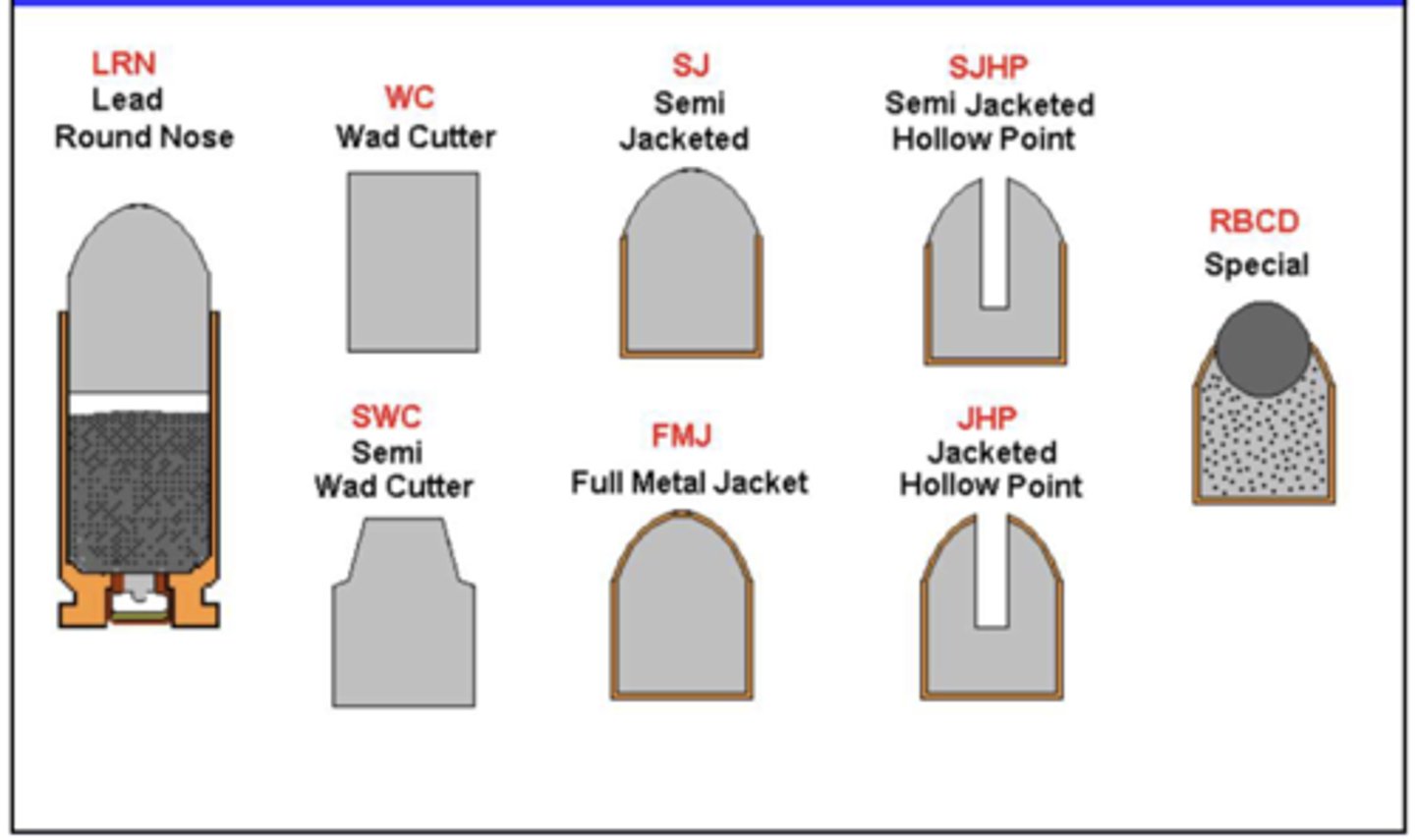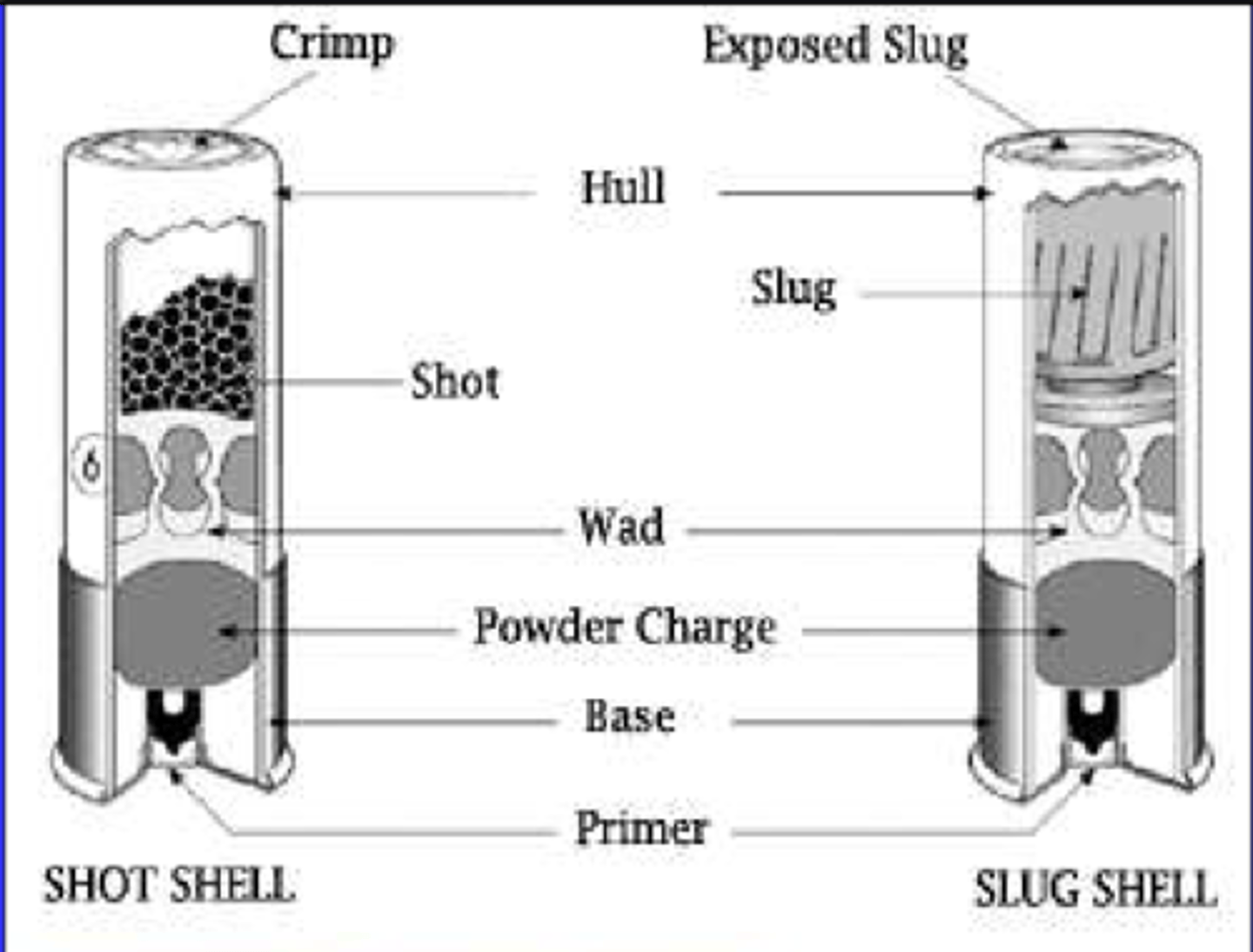Firearms, Toolmarks
1/20
There's no tags or description
Looks like no tags are added yet.
Name | Mastery | Learn | Test | Matching | Spaced |
|---|
No study sessions yet.
21 Terms
types of bullets

shot gun shells

rifiling and rifled barrels
-lands (raised) and grooves (cut) on the inside of metal tube
-imparts stability on bullet
broach rifling
all grooves are cut simultaneously w/ a series of progressively larger cutters
-tool changes microscopically between guns meaning each land and groove is unique
caliber
inside diameter of the bore measured from land to land
"rifled" weapons
-handguns
-semi-autos
-revolvers
-rifles
"non rifled" weapons
shotguns
markings on cartridge cases...
-firing pin impressions
-breech-face marks
-extractor and ejector marks
-marks from the magazine
firearm databases
-IBIS
-NIBIN
serial number restoration
chemical etching involves the removal of the outer layers of the metal to reveal the impressed characters underneath, strong acids are typically used to remove the metal
toolmark comparison technique
test markings are made with the tool in lead or other soft material
-compared under a comparison microscope
propellant residue
follows the bullet out of the barrel
-can be deposited on clothing of victim or other surface
-usually the result of gases + particles escaping
primer residue
from explosion of the primer
-microscopic particles expelled from a firearm during discharge
-composed of elements from the primer mixture of the ammunition
6-12 inches
how far does smoke travel?
propellant particles
the diameter of the spread of the particles increases as the muzzle distance increases
-usually only travel up to 3-4 feet
test firings
what can be used to get a better approximation of muzzle distance?
Griess Test
-chemical test for nitrites in GSR
-reacts with burned gun powder to produce and orange color
Sodium Rhodizonate Test
-tests for lead
-chemical reacts with lead and produces purple color
shotgun ammunition
pellets spread out as they exit the barrel
secondary transfer of GSR
depending on the surface, primer residue can be easily transferred to another surface
collection of primer residue
removed from the backs and palms of hands using adhesive lifts that are mounted on a stub
-right hand, left hand, and negative control
-elemental composition analyzed using SEM (typically antimony, barium, and lead)